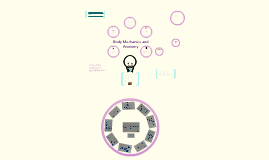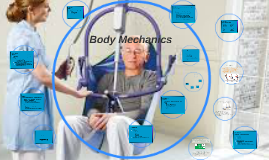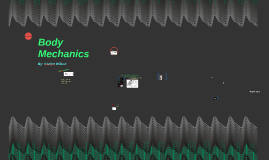Body Mechanics
Transcript: High amount of dependent patient require assistance dressing, bathing, feeding, toileting. Lack of or improper use of lifting equipment Staff shortage Repetitive motion: Twisting, bending Poor posture Poor physical fitness Educators teaching outdated techniques Repositioning a Patient Brief History Transferring Patient Factors Causing Injuries The U.S. Occupational Safety and Health Administration released federal ergonomic guidelines to prevent musculoskeletal injuries in the workplace. Paterson, Stephanie R. "Back Injuries in Nursing." Back Injuries in Nursing. N.p., n.d. Web. Potter, Patricia, Anne Perry, Patricia Stockert, Amy Hall. Fundamentals of Nursing, 8th Edition. Mosby, 2013. VitalBook file. Body mechanics is the process of using the body safely and efficiently. The "ABC's" of good body mechanics are alignment, balance, and coordinated body movement. "Guidelines for Nursing Homes: Ergonomics for the Prevention of Musculoskeletal Disorders." Guidelines for Nursing Homes: Ergonomics for the Prevention of Musculoskeletal Disorders. OSHA, Mar. 2009. References Coordinated musculoskeletal activity is necessary when positioning and transferring patients. The most common back injury is strain on the lumbar muscle group, which includes the muscles around the lumbar vertebrae. Injury to these areas affects the ability to bend forward, backward, and from side to side. Brief history of body mechanics Define the words body mechanics, alignment, and balance. Describe the "ABC's" of proper body mechanics. Describe and explain how to maintain and use proper body mechanics. Identify factors which may contribute to the development of back injuries in nursing. Body mechanics is the study of proper body movement to prevent and correct posture problems, reduce stress, and enhance physical capabilities. Objectives Alignment refers to the relationship of one body part to another along a horizontal or vertical line. Balance is stability produced by even distribution of weight. Coordinated body movement is a result of weight, center of gravity, and balance. Body Mechanics in Nursing (continued) Body Mechanics Do you need a lift team? Guidelines for Correct Body Mechanics ABC'S of Body Mechanics Body Mechanics in Nursing Body Mechanics The ability to rotate the hips and lower back is also decreased when lumbar muscle group is injured. Body mechanics alone are not sufficient to prevent musculoskeletal injuries when positioning or transferring patients. Keep your back straight and maintain proper posture. Stand with your feet apart and your weight evenly distributed. Face the patient or the object that you are moving. Use the large muscles of your legs to lift. Shift the position of your feet when turning, do not twist. Bend from the knees, not the waist. Use smooth coordinated motions. Let the patient know what you are doing. Encourage the patient to get/ask for help as much as possible.

















